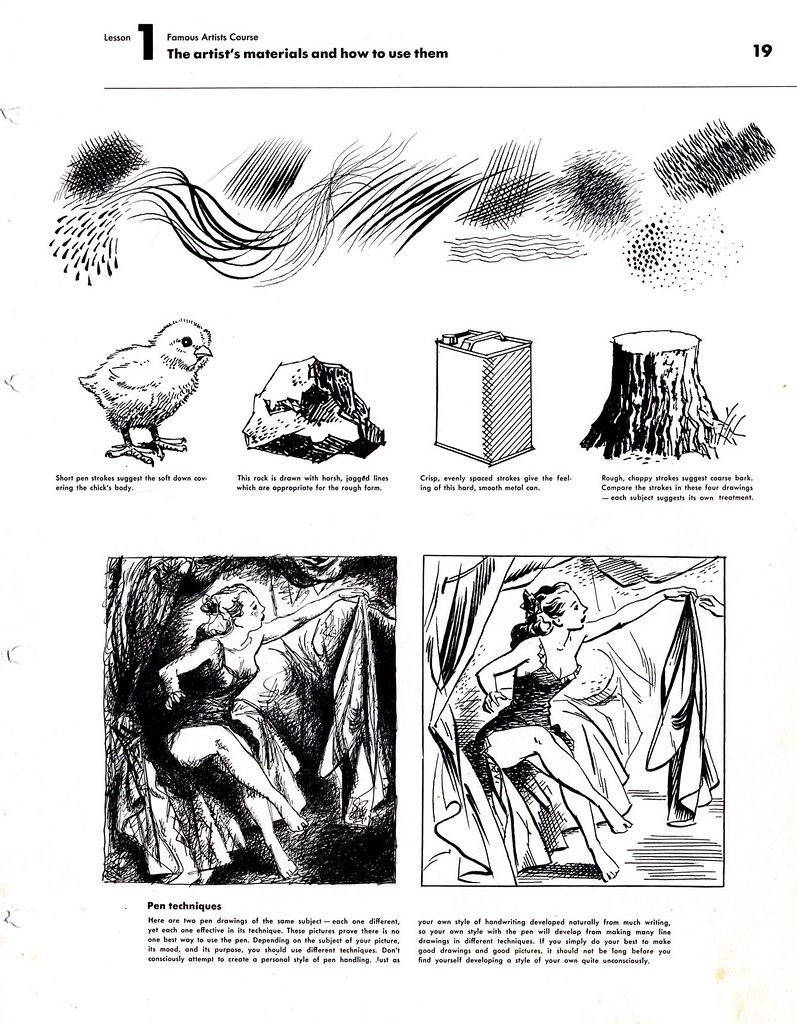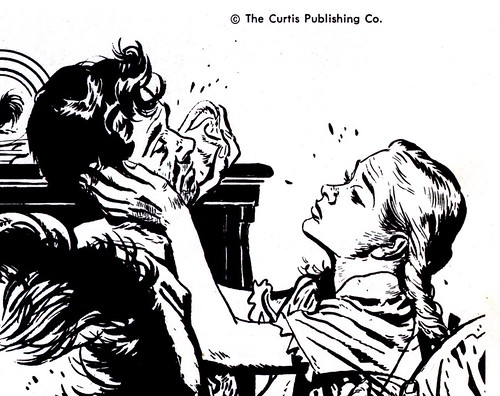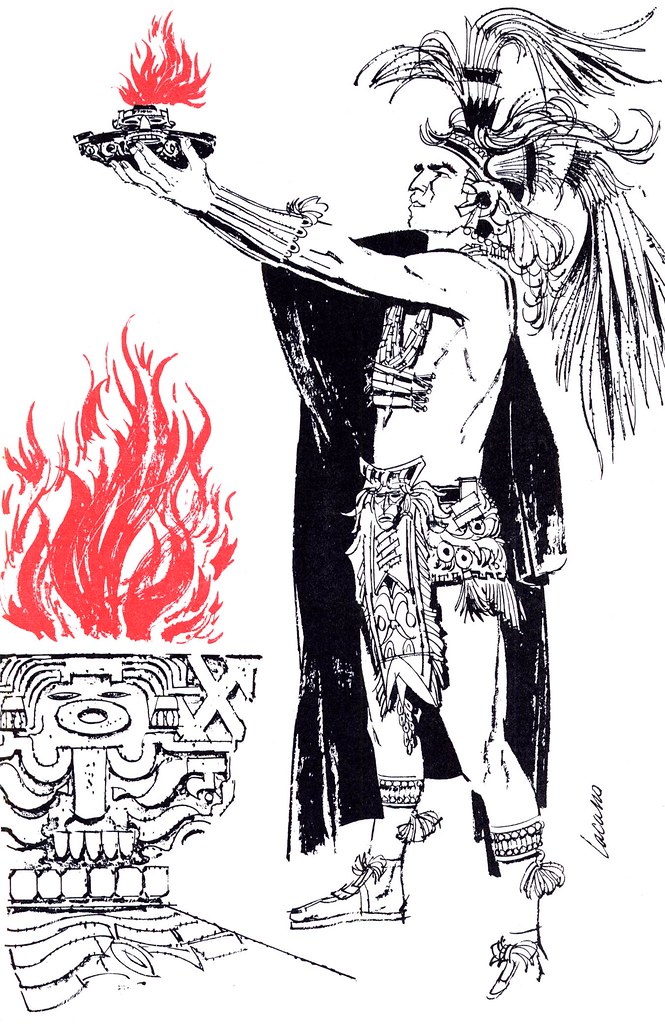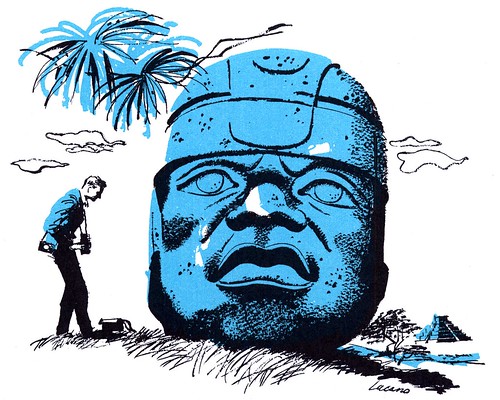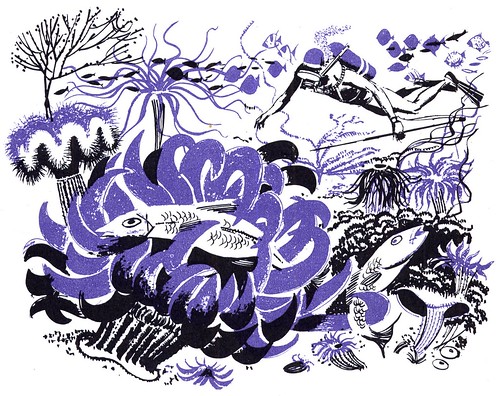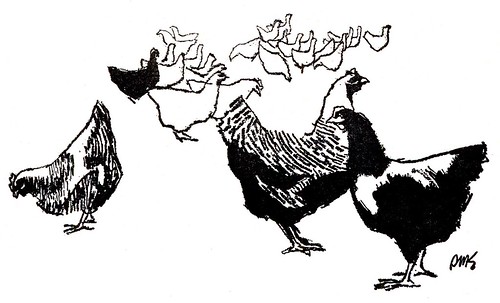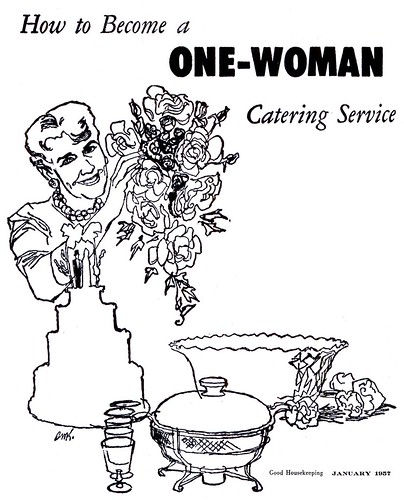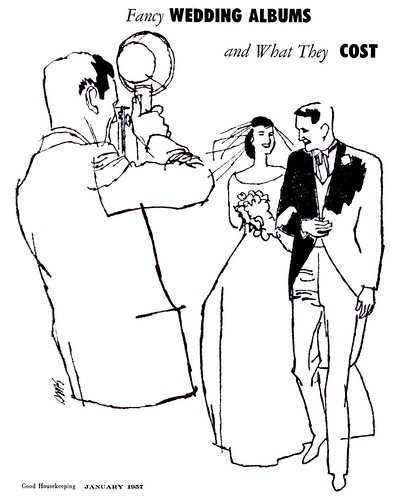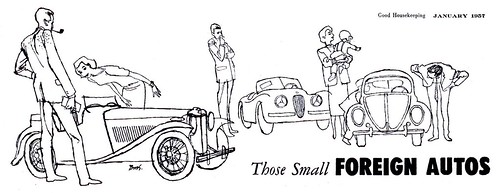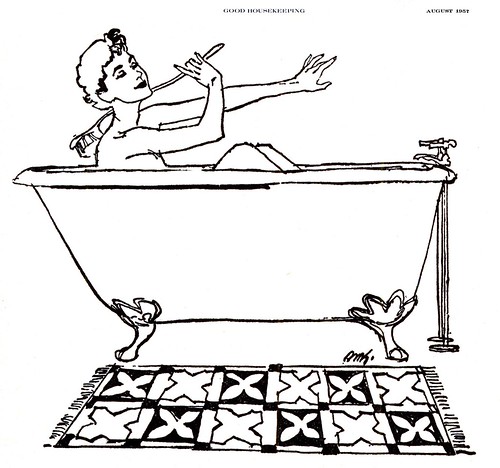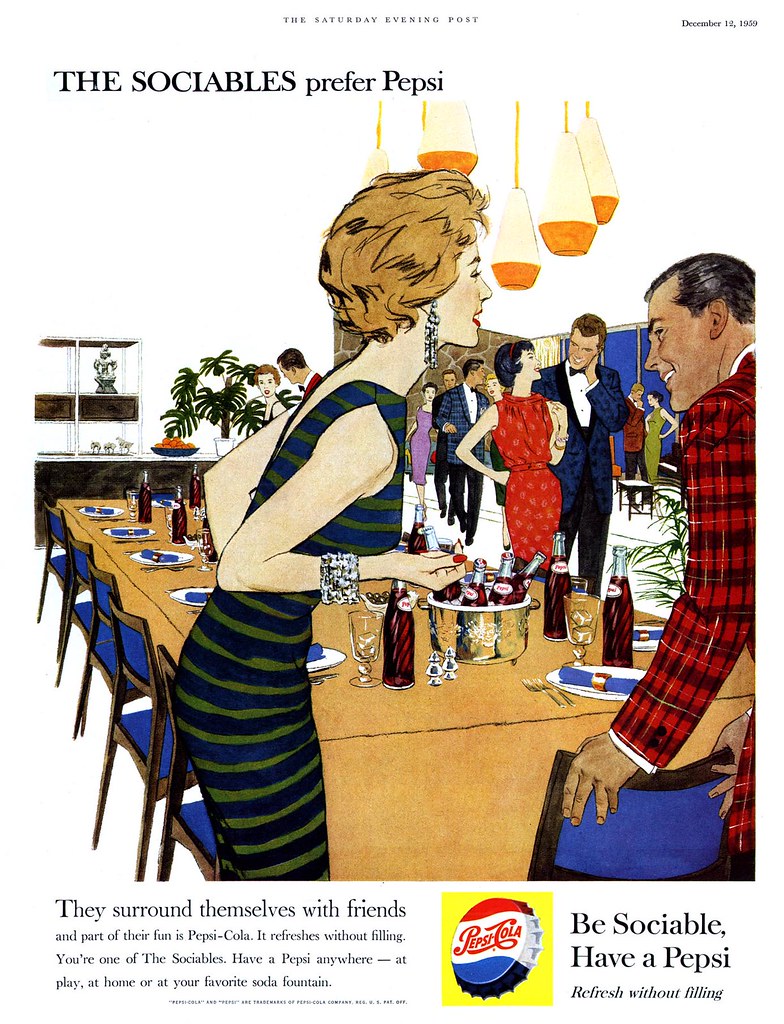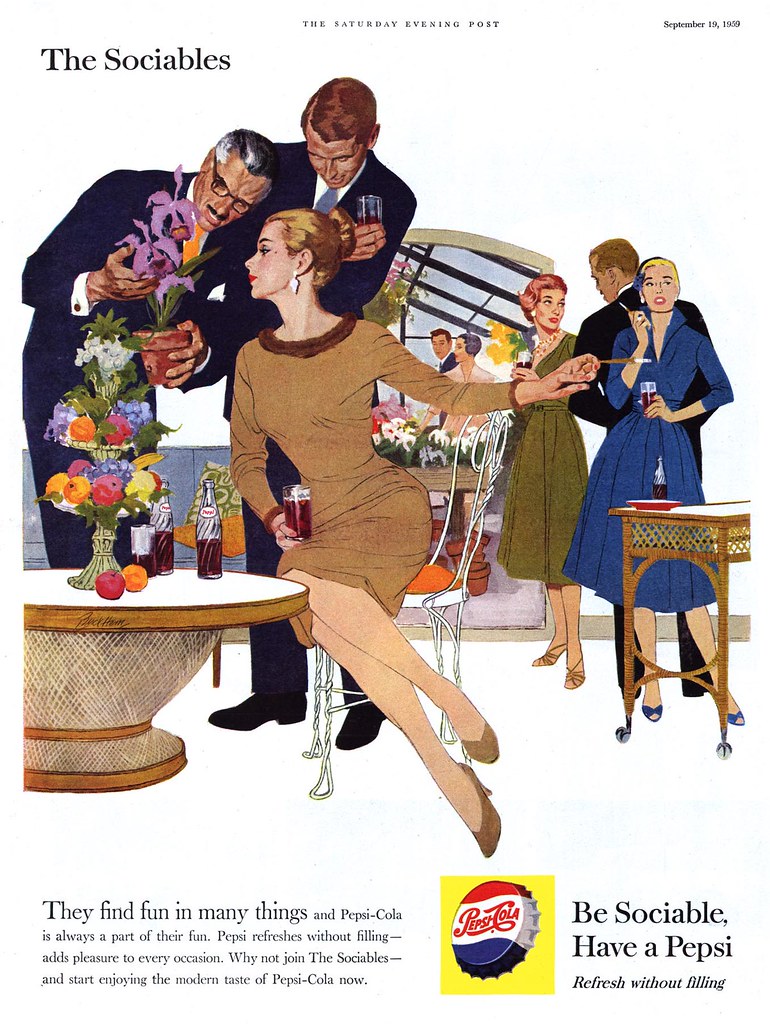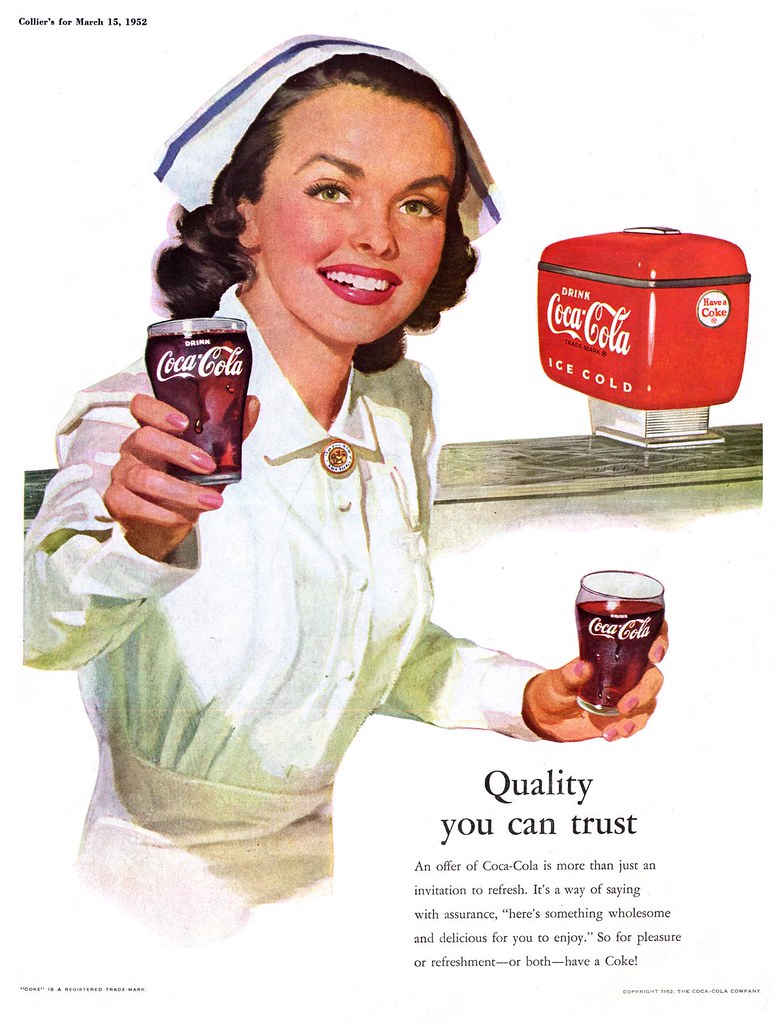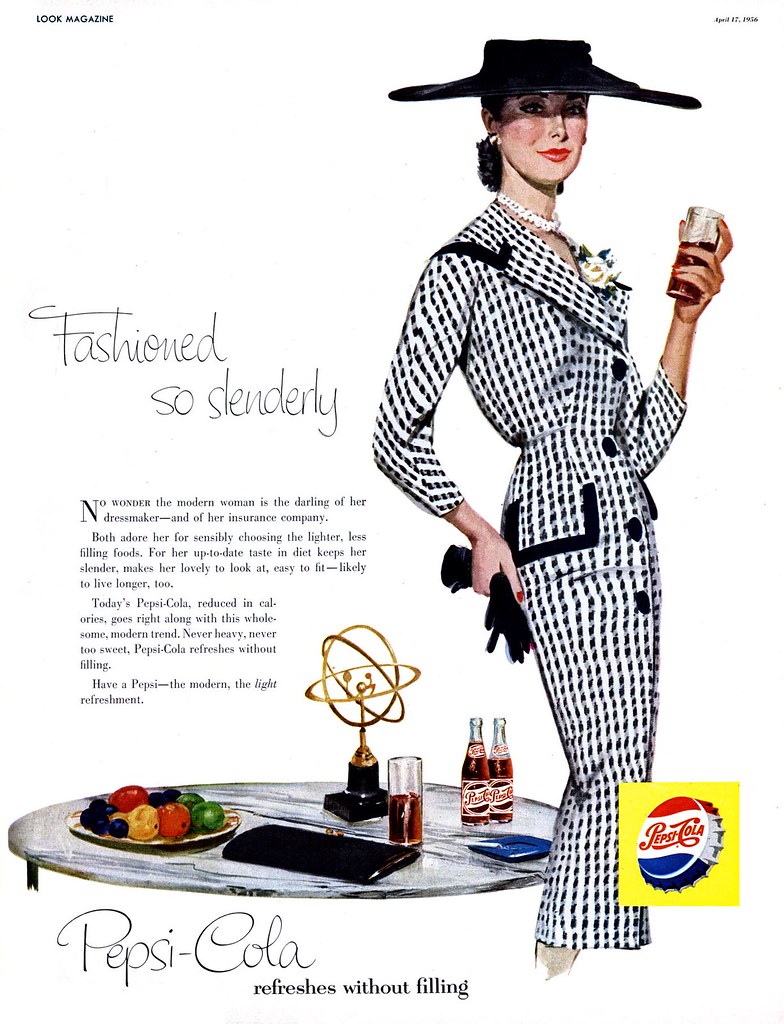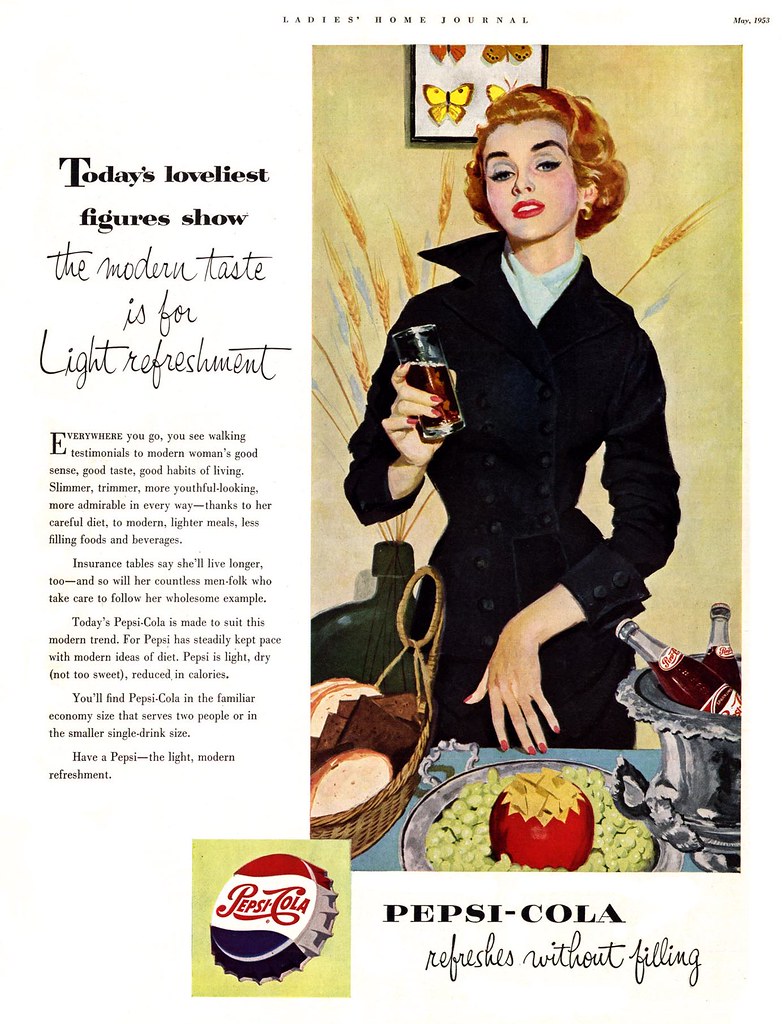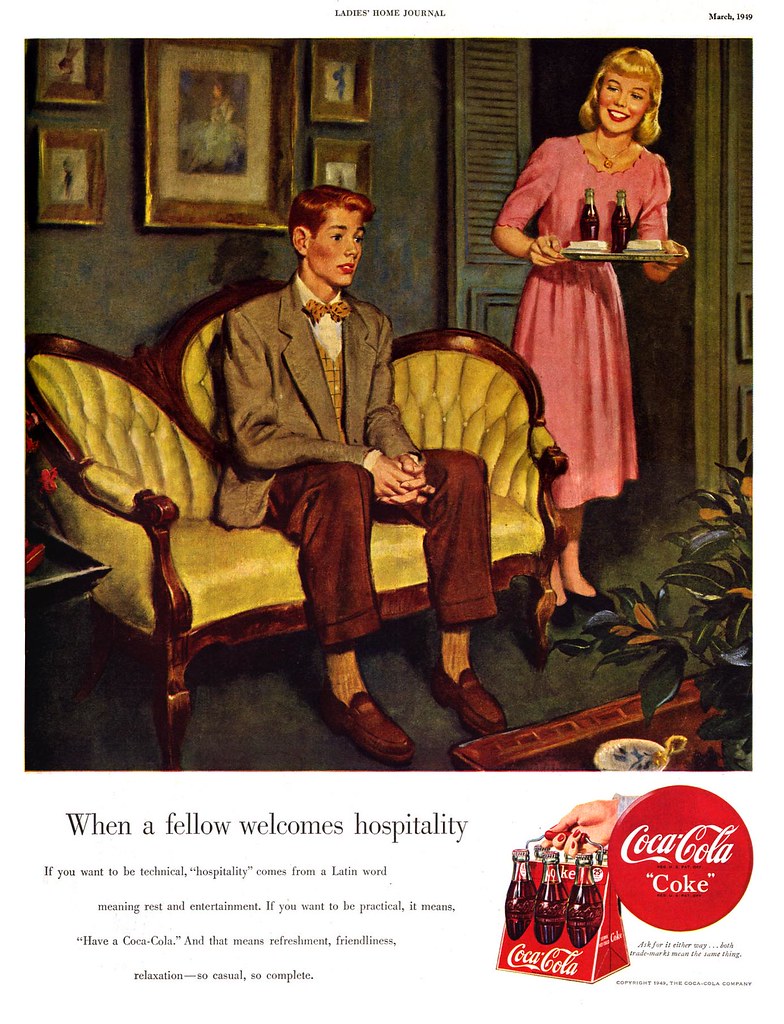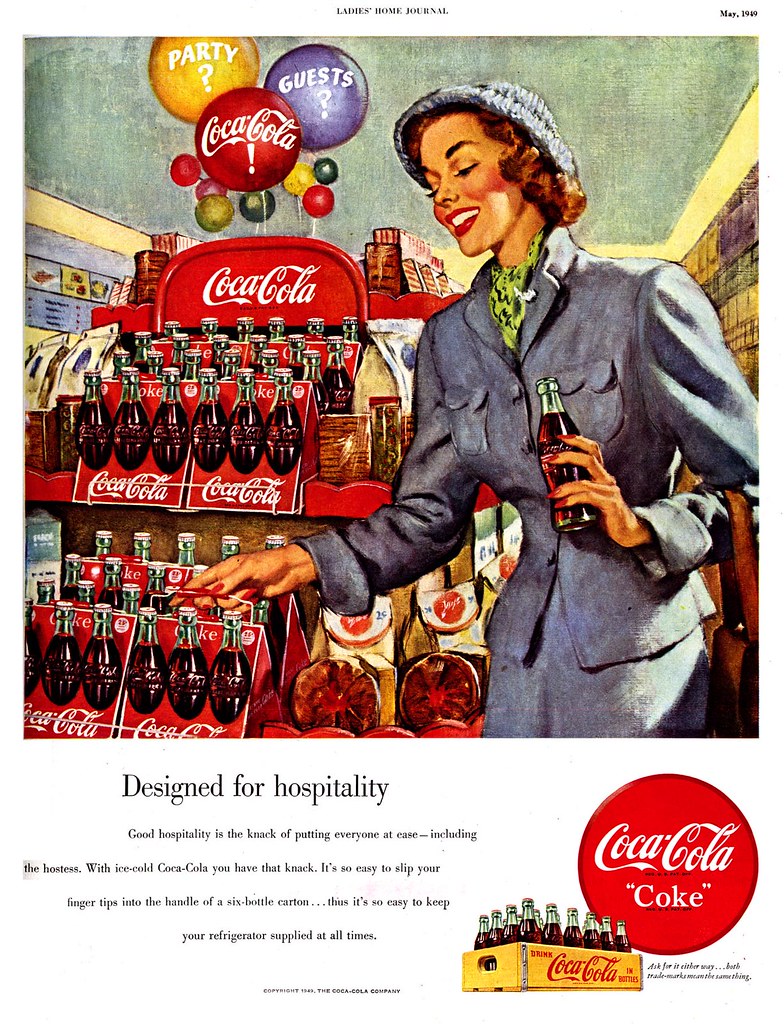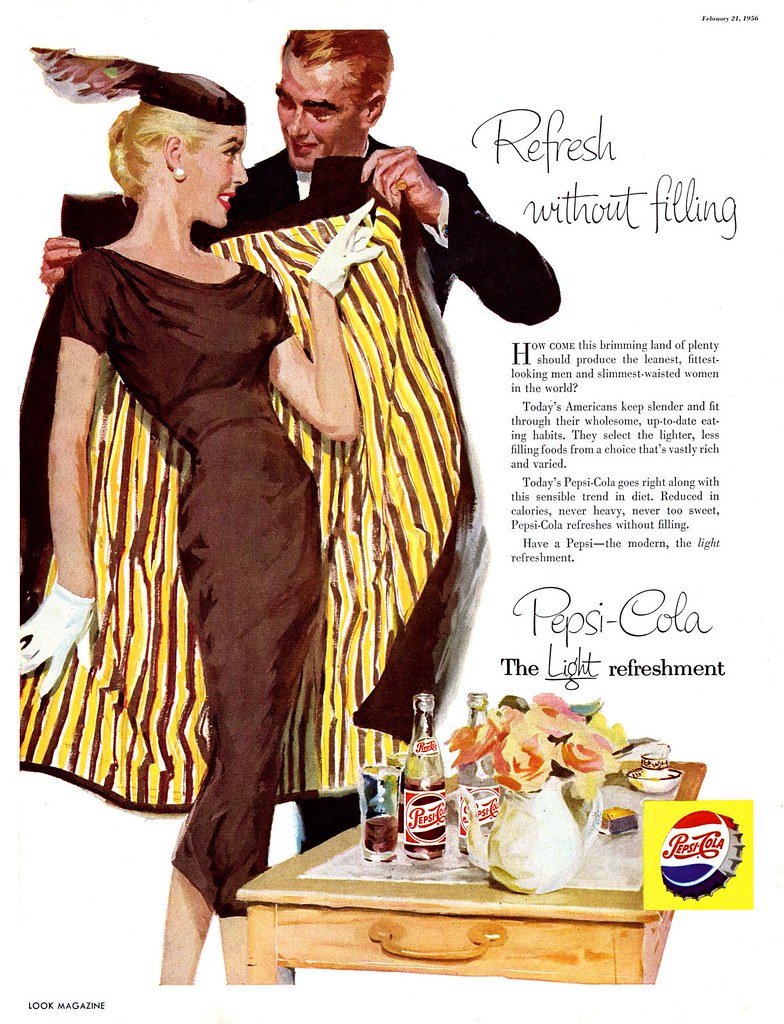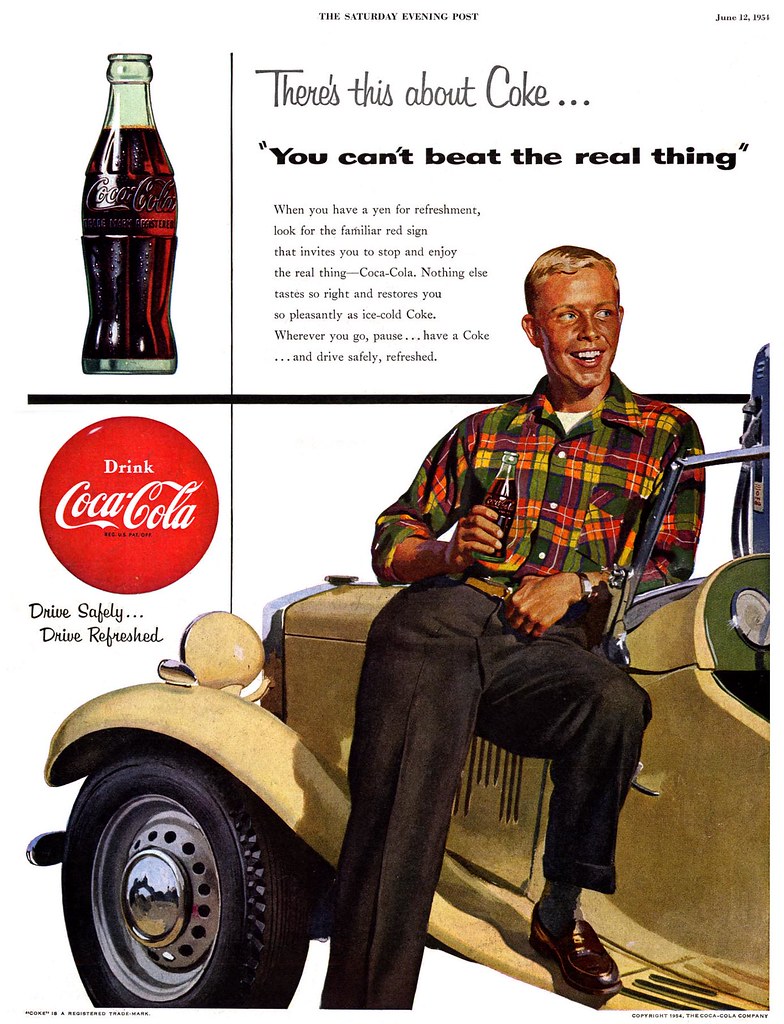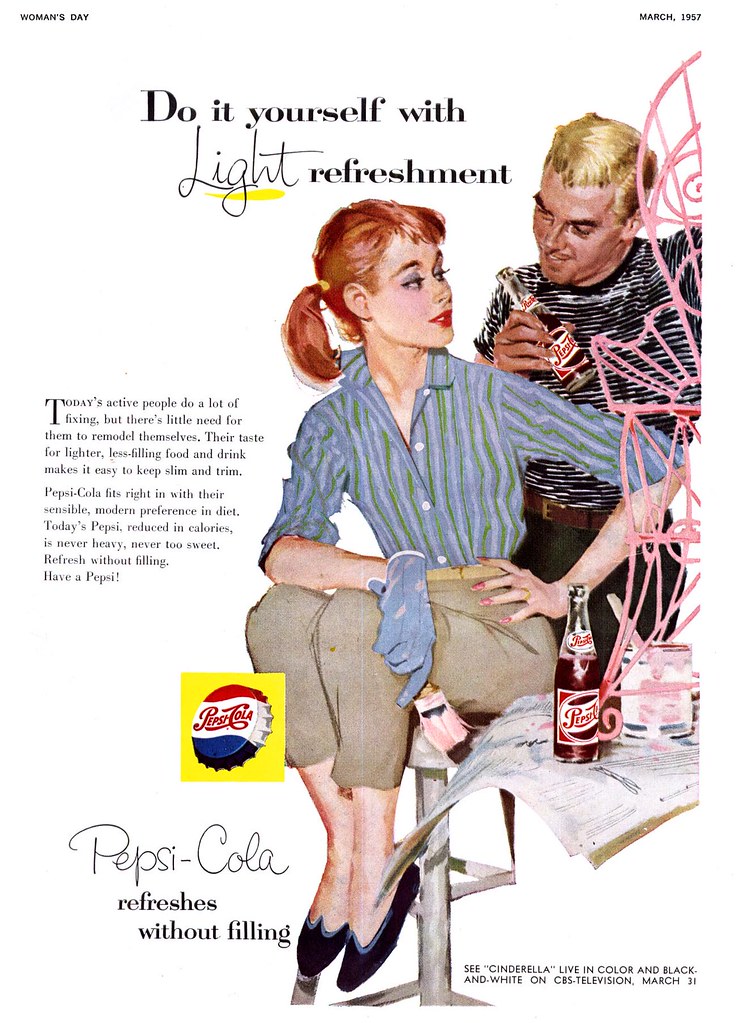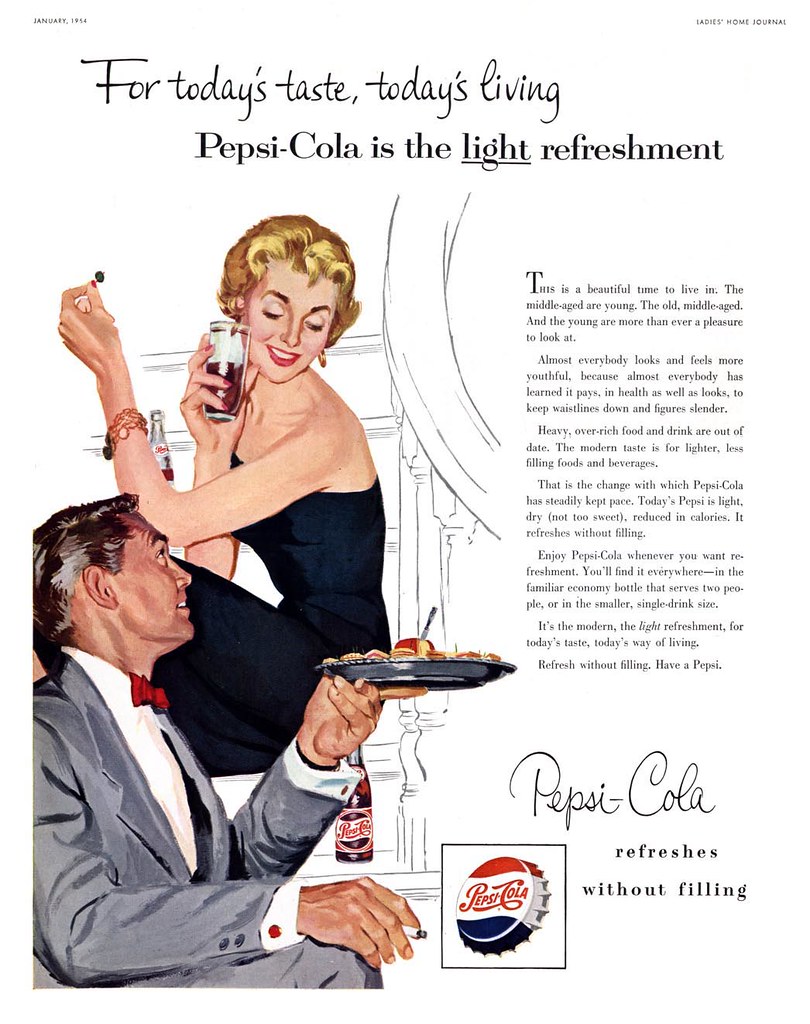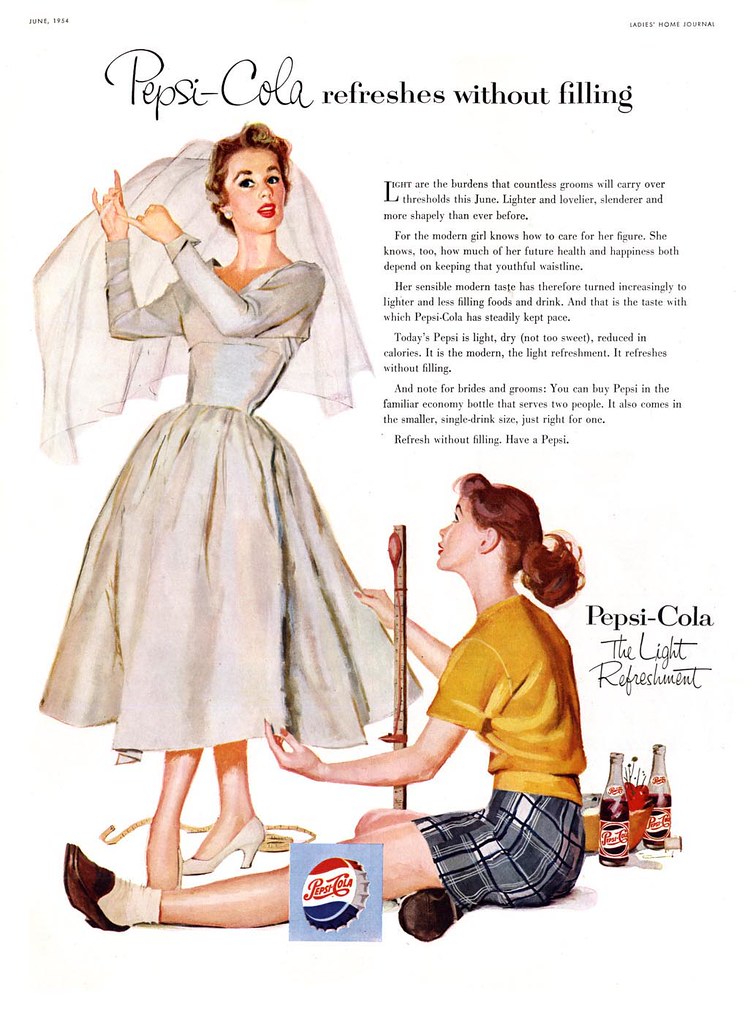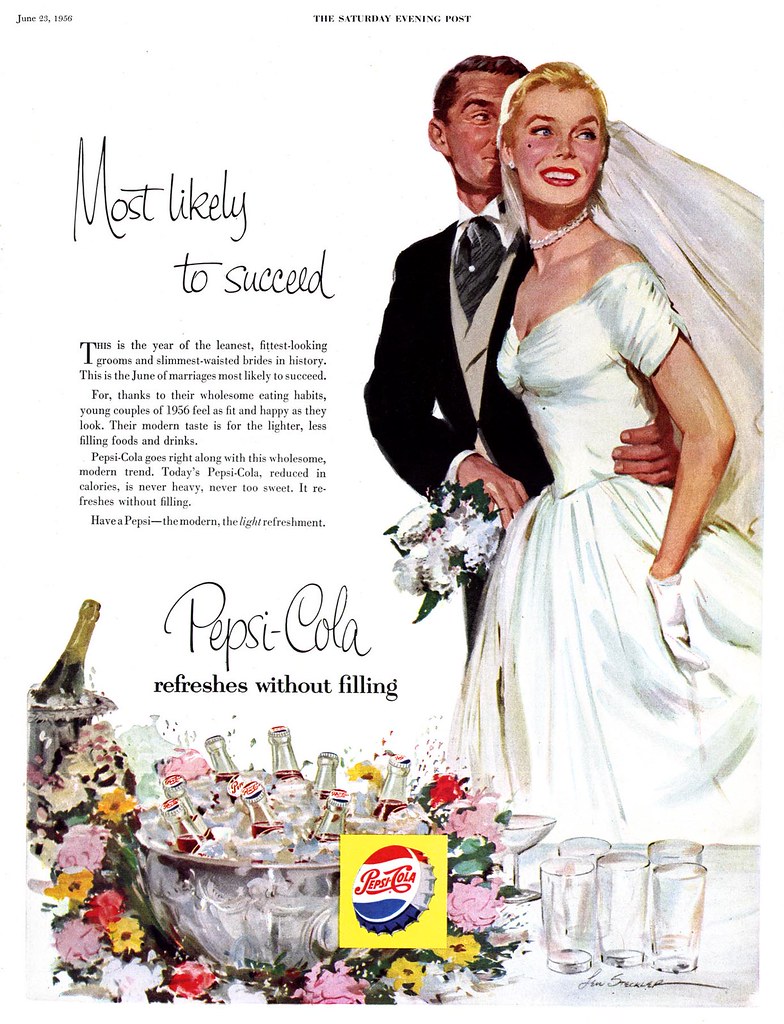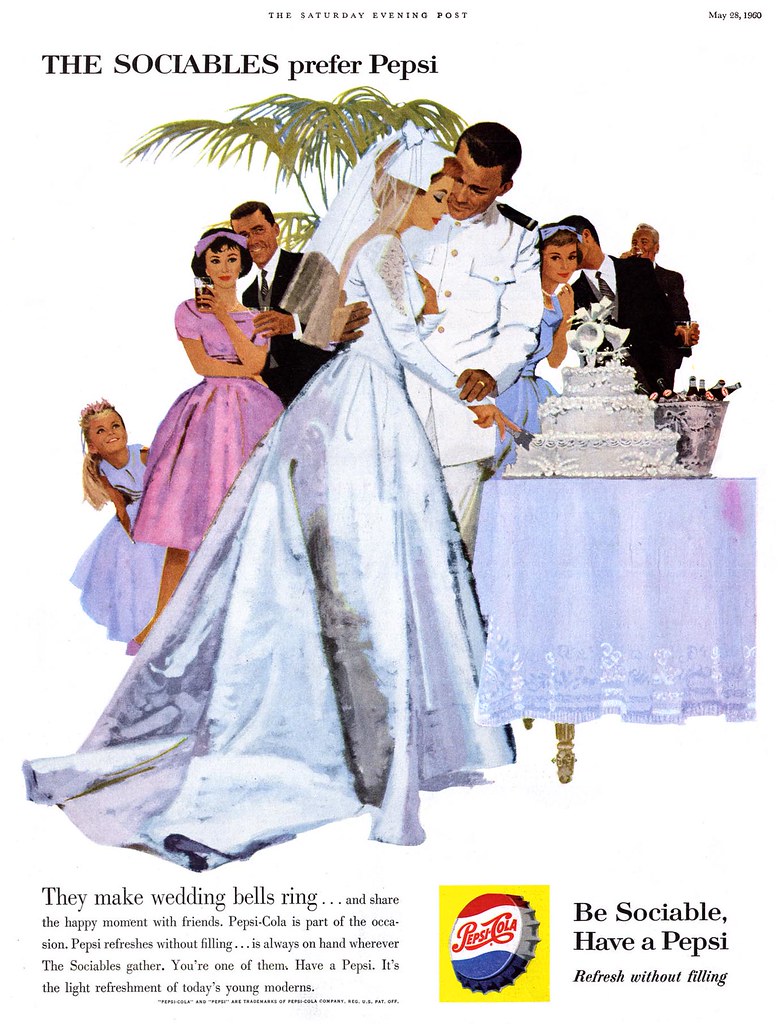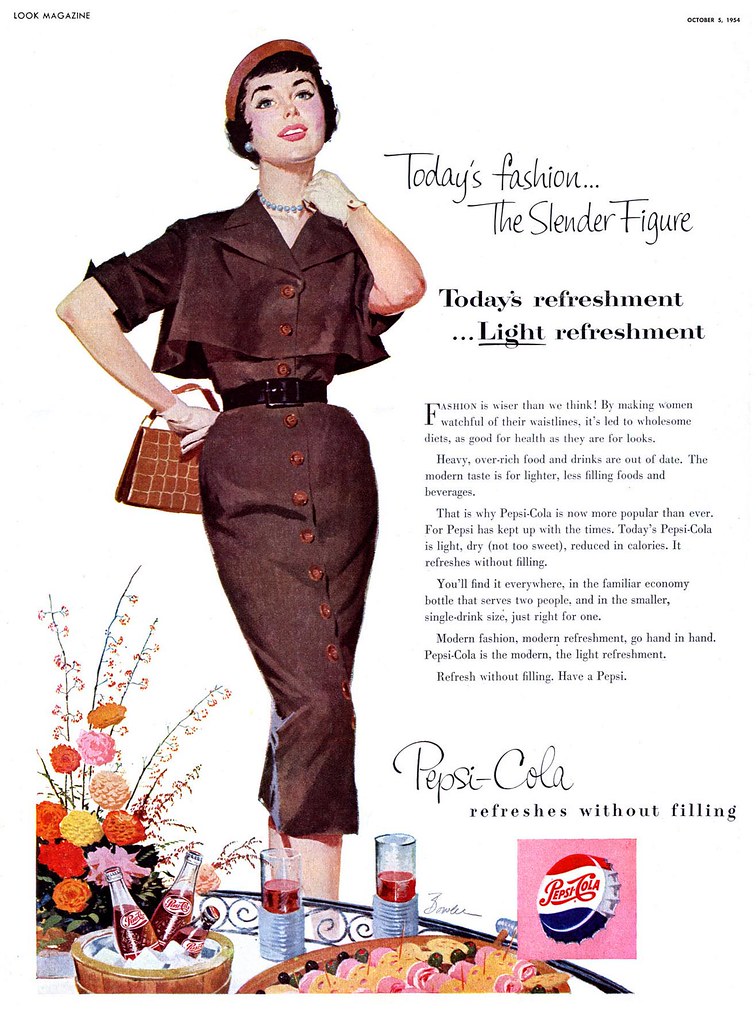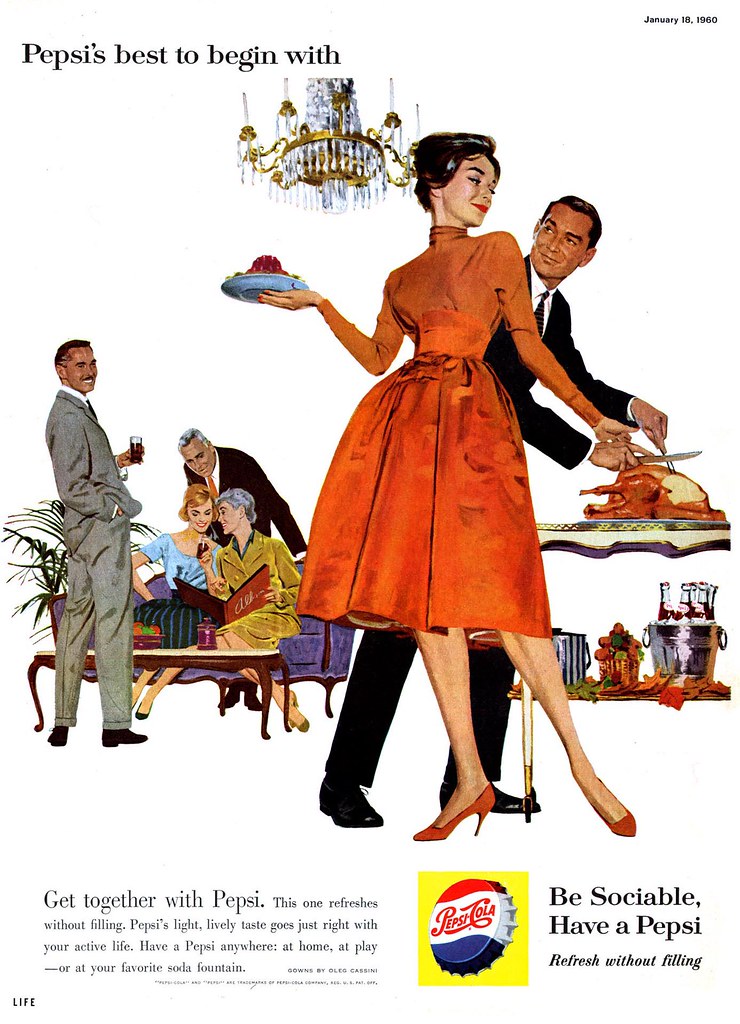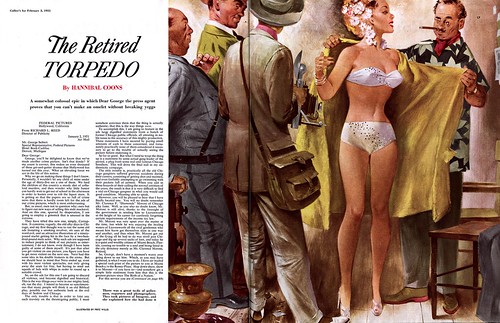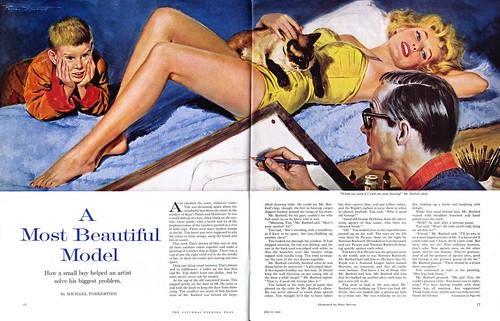I'd love to have been a fly on the wall in 1956 when Coca-Cola's ad agency convinced the soft drink giant to undertake a radical departure from its long-running wholesome, all-American small town approach.

While Pepsi stayed the course with its Sociables series of ads, Coke, which was running photographic ads that year, suddenly commissioned a dozen illustrations by a relative newcomer, Jack Potter, whose style could certainly be described as 'avante garde' for the time. Not only did Coke leap into the abyss - but they chose to run these ads on the high profile and expensive back covers of major magazines like
Life, Look and
The Saturday Evening Post.
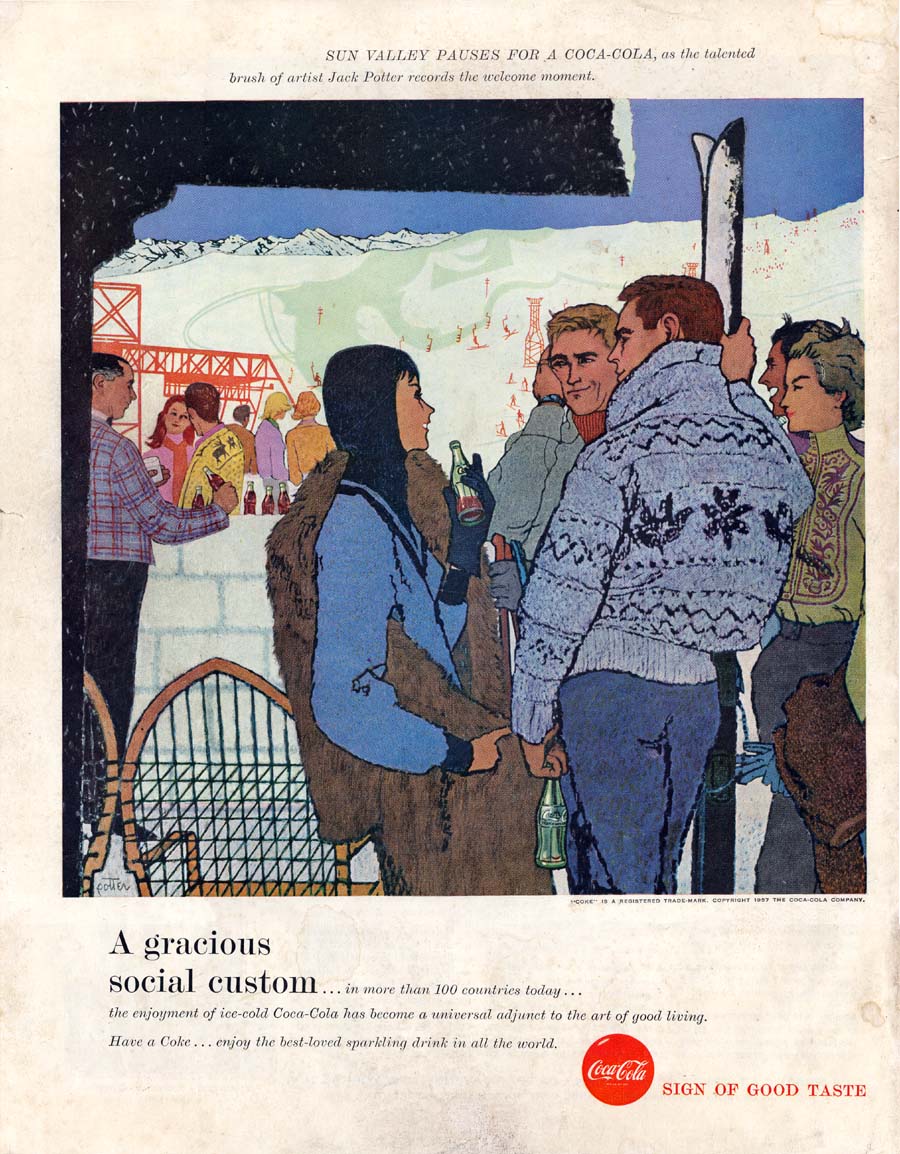
Imagine what this commission must have meant for the 30-year old Potter! Though he had relatively little published work at that point, he was about to be the visual representative for a major national ad campaign lasting an entire year and occupying some of the most prestigious media real estate in the country. I have to wonder what other, better established illustrators of the day must have thought of this...
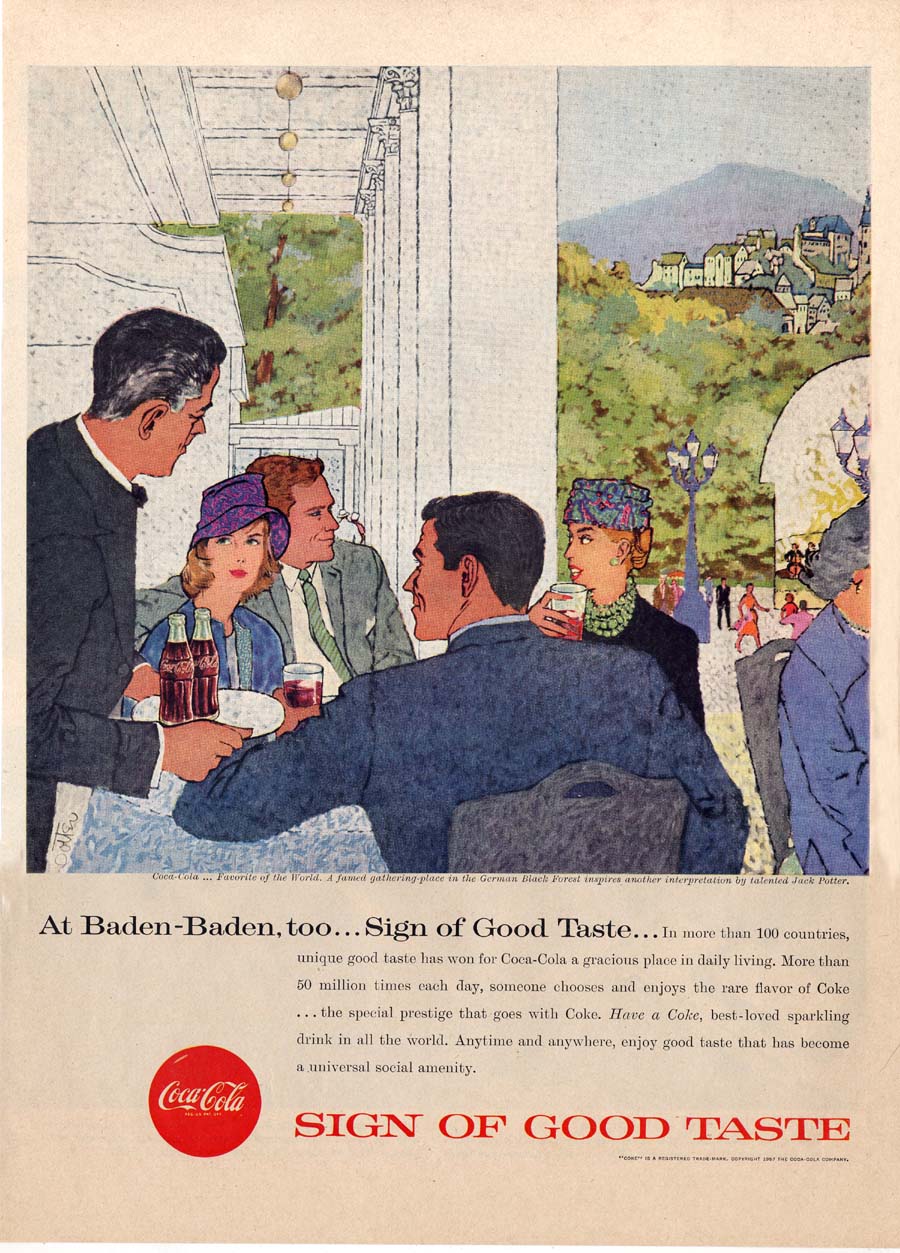
And perhaps more importantly, what did Pepsi think of Coke's full-bore assault on the brand's carefully nurtured marketing strategy? Was Coke's year-long experiment the catalyst that pushed Pepsi into 'modernizing' its visual presentation?
If yesterday's examples from 1959 represent a stylistic shift in approach then this series of ads (below), which Pepsi also ran during that year, suggest that the company was indeed casting about for a new identity. The style and design (if not the subject matter) are really quite a dramatic departure from what had been a solid, steady and long-running brand identity.

Illustrated by Roy Besser, this series strike me as having been designed to appeal to the same demographic that was seeking out the just-that-year released Barbie doll.

Why did Pepsi run these ads in mainstream magazines like
The Saturday Evening Post? They feel like they'd have been more appropriate for the readership of
Seventeen magazine...

In 1960, Pepsi returned to the tried and true look that had been its hallmark throughout the 50's. The Sociables were dating again!

Yes, they were socializing with others -- but clearly they had eyes only for each other. The focus was on the couple while everyone else remained in the middle distance.

In an odd bit of brand continuity, each ad seems to have required the illustrator to include a powerful red motif as an element of clothing on the beautiful woman which, in my opinion, would have had the viewer subconciously thinking about drinking... a Coke!
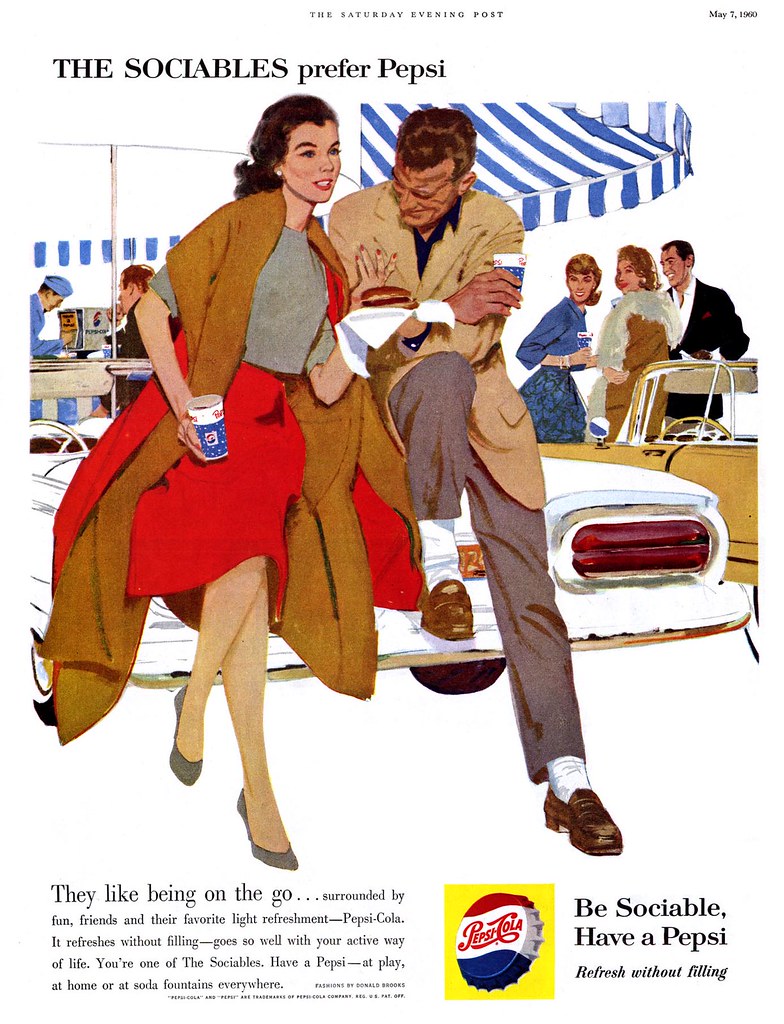
Whatever the case, the point becomes moot after 1960. Like so many other advertisers, both Pepsi and Coke shifted their focus to photography. With the exception of
Haddon Sundblom's Coca-Cola Santa Claus, relatively little illustration was used by either company from then on. The Sociables quietly faded away.
All of today's images have been added to my
Beverages Flickr set.

